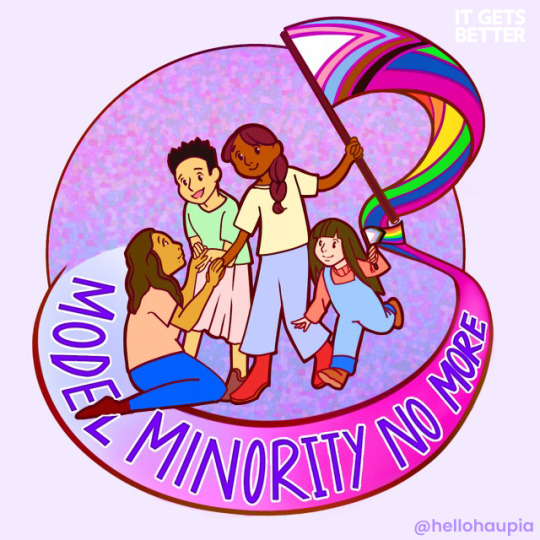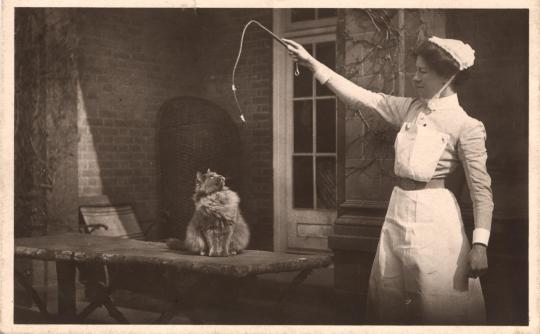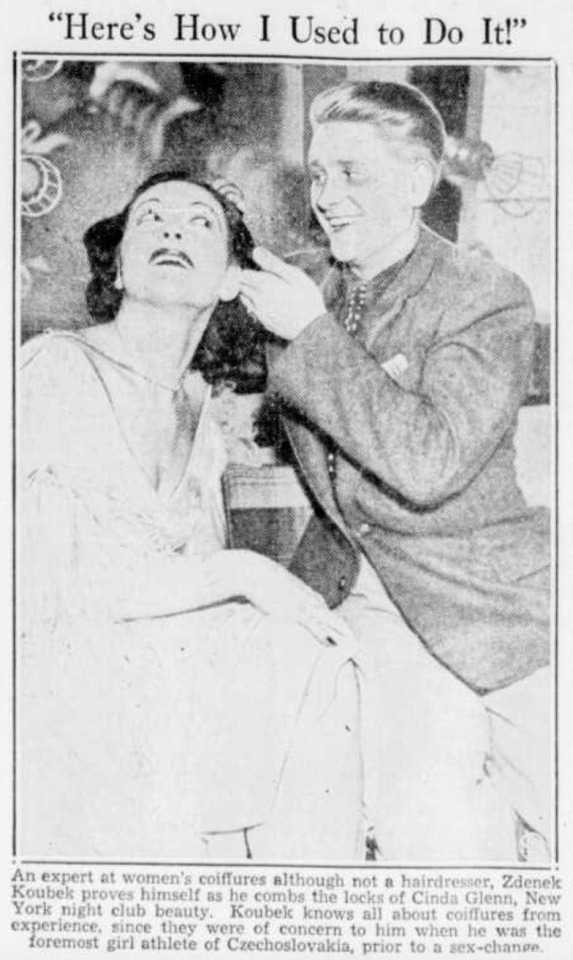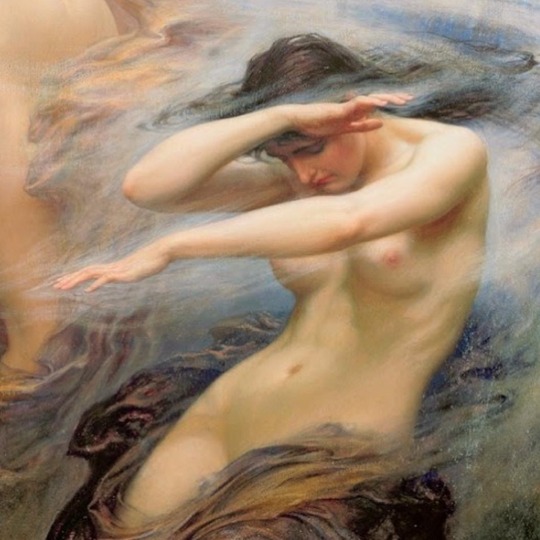how can we study history through a perspective of diversity, equity & inclusion? Rheanna | History, Italian, and Museum Studies | Nazareth University '24
Don't wanna be here? Send us removal request.
Text



The Ashmolean Museum houses a collection of stunning Greek and Roman casts, allowing visitors to get up close and personal with history. I recently wrote an article about how we engage with content in museums that is 'fake', and the benefits that might bring. You should check it out! https://seaxeducation.com/2022/06/22/the-ashmolean-cast-gallery-do-fakes-matter/
#article#ashmolean museum#oxford#greek history#roman history#museums#museum studies#antiquity#ancient history
3 notes
·
View notes
Text
Tuskegee Experiment (1932-1972)
Officially known as the “Tuskegee Study of Untreated Syphilis in the Negro Male”, beginning under the Herbert Hoover and FDR administrations.
The purpose of the study was to determine whether penicillin could prevent, not just cure, syphilis infection.
In order to track the disease’s full progression, researchers provided no effective care as the study’s African American participants experienced severe health problems including blindness, mental impairment—or death.

The men were monitored by health workers but only given placebos such as aspirin and mineral supplements, despite the fact that penicillin became the recommended treatment for syphilis in 1947, some 15 years into the study.
The experiment was forcibly ended due to public backlash, after Peter Buxton revealed the story to Jean Heller of the Associated Press, who broke the story in July 1972.
By that time, 28 participants had perished from syphilis, 100 more had passed away from related complications, at least 40 spouses had been diagnosed with it and the disease had been passed to 19 children at birth. As a result of the Tuskegee experiment, many African Americans developed a lingering, deep mistrust of public health officials and vaccines.
In 1973, Congress held hearings on the Tuskegee experiments, and the following year the study’s surviving participants, along with the heirs of those who died, received a $10 million out-of-court settlement. Additionally, new guidelines were issued to protect human subjects in U.S. government-funded research projects.
22 notes
·
View notes
Text


NEW on the guest blog for #AAPIHeritageMonth:
Joanna talks what it was like trying to live up to the standards of the "model minority" while also coming to terms with their queerness - and shares some amazing tips for helping you define your own community, find culturally-competent care, and be kind to yourself!
Amazing art is by their sister, IG: @hellohaupia.
"Growing up Asian, I had to keep secrets, including my queer identity and my emotional struggles. I had to keep these secrets from my family and my social circles because of the pressures enforced by the model minority myth and intergenerational trauma. The concept of the “model minority” defines Asian-Americans and Pacific Islanders (AAPI) as groups that owe their socioeconomic and academic success to a stronger work ethic, as compared to other minority groups. This myth holds up systems of white supremacy by placing AAPI in a higher position than Black Americans based on microaggressions that one’s intelligence should be ascribed to race.
Model minority myth harms AAPI people. It is impossible to adhere to every standard that it sets. Model minority myth can bar individuals with emotional struggles from asking for support. If you have to uphold others’ unrealistic standards of you, it can impact how you view your own mental health. When I was attending school..."
Read the rest here!
65 notes
·
View notes
Text
repatriation, and the problem with the British Museum.


If you are part of the museums world, you have likely heard the word “repatriation.” Repatriation is the return of something (or someone) to its original country, and has become a buzzword in recent years as more and more museums are being rightfully called out for the pieces in their collections that do not rightfully belong to them.
Museums have historically partaken in the cycles of colonization that have led to cultural and traditional erasure among countless groups, and have directly benefited as a result, as they have taken artifacts, artwork, and even human remains as their own to display.
Not all museums have been complicit in the harboring of stolen items, and it is unfair to group all museums as one- some, like the Smithsonian’s National Museum of the American Indian, have taken steps towards repatriation and acknowledged the issue. They explain that curators work closely with Indigenous tribes and will return items, including human remains, upon request.
However, some museums (cough cough, the British Museum) have been…extremely complicit in the harboring of stolen items, despite widespread attention and a very vocal audience that has been addressing the issue for some time. The British Museum is one of the world’s most famous museums, housing artifacts like the Rosetta Stone, the Benin Bronzes, and the Elgin Marbles. What all of these have in common is that they were stolen, and have been denied requests for repatriation. For years now, the museum has hidden behind the “British Museum Act of 1963, a national statute which prohibits the institution from returning works” as a reason why, hey, we can’t do anything about it!
I was lucky enough one year ago to partake in a 12-day study abroad trip to the United Kingdom, and our journey started in London. On day three, my group boarded the tube and traveled to Holborn to see the British Museum. I had never before traveled further than a state away, and was so excited with all of the new experiences surrounding me, that I had no idea of the legacy haunting the British Museum. I will not lie– I thoroughly enjoyed the museum. It wasn’t until returning home that I learned more about the museum’s history and no longer felt such joy when looking at the photos I took, one of which was a close-up of the Rosetta Stone. The actual Rosetta Stone, inches away from me, behind glass.

When I got home, one of the first things I saw online was a video from creator Blair Imani, who makes some amazing short-form content to educate about important issues. She posted a TikTok about the museum and it’s dark history of colonization and stealing of cultural items, which led me to look more into repatriation as a whole. The British Museum is not the only museum to be at fault for the refusal to return stolen artifacts to their rightful homes, but it is currently the most notable for the items it houses.
Below, I want to highlight some important articles, videos, and general resources about repatriation that discuss the issue in a way much more eloquent than I could, because this issue is truly important.
The UK Has a 60-Year Old Law Prohibiting Repatriation of Art. Is That About to Change? (The Observer)
The British Museum is full of stolen artifacts (Vox)
The British Museum’s heartless repatriation policy exposed
And, for fun, here are some photos I took at the museum. Despite the history of the museum, it truly was an experience I am thankful for, and I do look back on these photos fondly!







5 notes
·
View notes
Text

We can't stop staring at the cat's expression in this photo ca. 1900-1914. It comes from the National Library of Medicine's Images from the History of Medicine collection on JSTOR, featuring more than 40,000 open access photographs and illustrations!
878 notes
·
View notes
Text
AMAZING!! A beautiful thread regarding archives, digitization, and queer history, showing the strength of the community during Pride Month <3
As someone who is queer, a lover of archives, and a huge supporter of digitization and access, I love this and the resources presented here. Even JSTOR makes an appearance!
We need a digital archive of LGBTQ+ works of art, science, and every other conceivable work we can share between each other because we are beyond the genocide warning level in most countries in the west and they're already trying to purge us from libraries.
33K notes
·
View notes
Text
LGBTQ+ history is ALWAYS important, not just during Pride Month. This is an interesting story that shows that being transgender is not a new “phenomenon” or a “trend,” but simply just who someone always has been!

ID: a black and white photo and caption from a newspaper showing a young white trans man with light hair wearing a tweed jacket and high collar smiling at a young white woman in a pale dress as he brushes her mid-length dark hair. She is smiling at him from the slightly complex angle as he brushes her hair. The photo is faded and not great quality but their faces are clear.
The headline over the photo is “Here’s How I Used To Do It!”
The caption below reads “An expert at women's coiffures although not a hairdresser, Zdenek Koubek proves himself as he combs the locks of Cinda Glenn, New York night club beauty. Koubek knows all about coiffures from experience, since they were of concern to him when he was the foremost girl athlete of Czechoslovakia, prior to a sex-change.”
Zdenek Koubek was born in Paskov, Czechoslovakia (at the time) in December 1913, one of eight siblings, and competed as an athlete. With minimal formal training, he began running at age 17, decided to pursue it formally aged 19, and broke two world records at the 1934 world olympics.
Because queer and gender-diverse history is complex, I’m genuinely unsure if Zdenek was intersex. He seems to have been pretty gender-nonconforming when read as a woman in his early life and seems to have retired from athletics because he was harassed by people wanting him to undergo invasive “gender checks” after his gold medals at the 1934 Olympics.
Apparently the current obsession with “defining gender in sport” has roots back to the 1930s. Athletes competing in female athletics have been forced to undergo a variety of examinations for the purpose of declaring them “female enough”. They seem to have never been pleasant, appropriate, or anything other than invasive and dehumanising, and they seem to have always focused on a) defining gender by physicality b) defined that physicality in fairly arbitrary ways that are actually incredibly difficult to relate to anything objective, despite a veneer of scientific objectivity.
I can entirely see why the threat of such harassment would have caused Zdenek to decide an athletic or adjacent career wasn’t worth undergoing it, whether he personally believed himself to be intersex or whether we would recognise him as such today. The term “intersex” has many definitions, and is often challenged by medical professionals if it could potentially cover too many people - e.g. medical professionals have repeatedly challenged the term when used by AFAB people with PCOS, which can cause fertility issues, hirstutism etc, purely on the grounds of “that would make around 10% of women intersex”. Zdenek simply publicly stated “I was wrongly assigned as female at birth” without giving any other details - as he had *every* right to. Some historians have characterised him as intersex based on this, and others simply as trans; he appears, very reasonably, to have preferred to preserve his privacy on the details.
Zdenek went on a lecture tour of the US talking about his life and transitioned in 1936. At the time of this photo, he was pursuing a career in cabaret in the US. He seems to have been reasonably successful but never settled there, returning home and marrying a cis woman with whom he lived happily for the rest of his life, dying in Prague aged 72 in 1986.
He joined a local rugby team along with his brother Jaroslov after WWII and seems to have been an enthusiastic amateur player. I hope he got a lot of joy out of it, which he does seem to have.
Like so many queer and trans histories, Zdenek’s is somewhat obscured because so much of what has been written about him is always skewed by the writer’s own perspectives about gender and transness. Including the drive to impose a false binary on trans experience - which I as a nonbinary person know is certainly not universally present.
There are, of course, *absolutely* trans people who always have a strong feeling of gender equating to “knowing they are a boy/girl from an early age”, and I in no way wish to erase them or their experiences, but it must also be noted and acknowledged there are plenty of us with different experiences. There are people like me who feel “wrong” in our assigned gender from pretty early in life, all the way down to having quite strong dysphoria in puberty and afterwards, but don’t strongly ID as the “opposite” binary gender either. There are people who rub along fine in their assigned gender, or who have many issues with it but don’t know what they equate to, until they have some experience presenting otherwise and suddenly experience strong gender euphoria for the first time in their lives. There are people who never feel anything much at all about gender and only ever do any identifying purely as a matter of convenience because a very binary society requires it.
Cis people seem to find the “always knew/born in the wrong body” narrative the easiest to relate to, and I can only assume that is because it is the narrative that allows them to challenge our society’s gender-essentialist, binarist worldview the *least*. It is considerably easier, and requires much less thought and critical attention, to say “I guess sometimes the occasional person is just mistakenly assigned to the wrong category” than to question those categories, why they exist, what they actually are, how they are imposed, and whether they actually mean anything at all in an objective sense.
I have no idea where Zdenek fell on any of this, or if his experience was very different in another way.
I posted this to, as ever, note that we are not a new phenomenon. Trans people are part of human history. We have always existed. We have always contributed. The way the society we lived in perceived us *and* how the societies our stories have passed through perceived us affect how our stories are told today, and those things can make it complex to uncover the lived experience of the trans person behind all of that. Queer and trans history must always be about acknowledging those facts and uncertainties while doing our best to find out as much as possible about the actual lived experiences of our siblings in the past.
108 notes
·
View notes
Photo


Jewish Wedding Ring. First half 14th century
German
2K notes
·
View notes
Text
an interesting TikTok video discussing the bodies of the past! not often included in talks about diversity and inclusion are talks about body positivity and accessibility for people of all sizes, though this is a very real issue.
1K notes
·
View notes
Text




the morning mists (clyties of the mist) oil painting on canvas by british artist herbert james draper, 1912 ✨
9K notes
·
View notes
Text
One of the ways we can study the past in a way that is reflective of our modern world, using DEI themes and the concept of intersectionality, is by digging into narratives from the past that have often been overlooked and highlighting them.
This article showcases ten extraordinary women from the Middle Ages who fought as warriors, ranging from Joan of Arc (who I have studied extensively) to lesser known historical characters like "The Tiger of Forli," Caterina Sforza.
1 note
·
View note
Text
“Diversity, equity, and inclusion are three closely linked values held by many organizations that are working to be supportive of different groups of individuals, including people of different races, ethnicities, religions, abilities, genders, and sexual orientations.”
source
0 notes
Text
welcome to my CME project!
to introduce you to my blog and the question I’ll be answering as I continue on, keep reading below!
- Rheanna


who am I?
My name is Rheanna, and I am about to be a senior at Nazareth University (yes, we are officially a University, now!)
I study History and Italian with a minor in Museums, Archives, and Public History
I studied abroad during the summer of 2022...twice!
I spent 12 days in the United Kingdom as part of a Museums trip, traveling through England and Northern Ireland and seeing historical landmarks and museums.
I returned home for a short time only to cross the ocean again for a five week program in Pescara, Italy! I visited famous cities and was able to practice the language I had studied for eight years at that point, all while immersed in the culture.


what is this blog?
At Naz, all students are required to create an original project as part of their “Core Milestone Experience” where they choose three diverse courses they have taken and create a project surrounding them and an “enduring question.”
For this project, I wanted to make sure I encompassed my interests with an enduring question that was tailored to me, depicted through courses I have taken. With this blog, I will be asking…
How can we study history through a modern perspective of diversity, equity, and inclusion?
For my three courses, I chose these:
HIS-260 Women & Witchcraft
Taught by Prof McCane, I was able to examine witchcraft from antiquity, to the European Witch Craze, the Salem Witch Trials, to modernity; we looked at how different groups were treated through the lens of witchcraft.
PHIS-360 21st Century Museums in the UK
This is the course I took while on my study abroad to the UK, with Dr. Kneeland and Dr. Albright. I looked extensively into how museums present information in the 21st century by visiting countless museums and historical sites.
WGS-201 Introduction to Women’s & Gender Studies
This course, taught by Dr. Albright, introduced me to important literature on intersectionality and feminism that has helped me in finding the language I need for a project like this.
so what will this blog be?
A bit of everything! I like tumblr for the ability to share content from all over, be it photos or articles or videos, and to tag it accordingly like a digital archive. I’m going to share content that relates to my question as I find it, and share my own writings on the topic with my own experiences and things I have learned along the way. I want my own voice to show through on this, and hope it already has.
You can navigate through it all here, and I hope you’ll join me on my CME journey.
0 notes